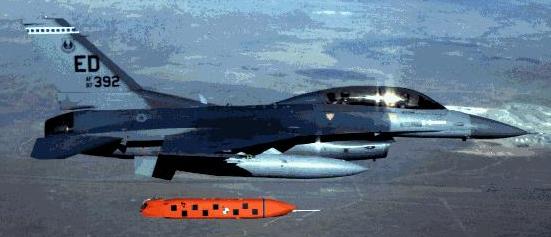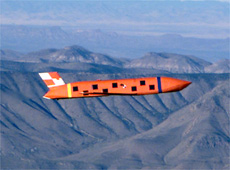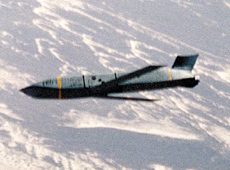Lockheed Martin AGM-158 JASSM
The JASSM (Joint Air-to-Surface Standoff Missile) program was initated in 1995 following the cancellation of the AGM-137 TSSAM (Tri-Service Standoff Attack Missile) because of high cost. Development goal was a low-observable long-range precision guided stand-off missile for significantly lower cost than the TSSAM. In June 1996, program-definition and risk-reduction contracts were awarded to Lockheed Martin and McDonnell Douglas (now Boeing). At the same time, the missile designations AGM-158A and AGM-159A were allocated to the two competing JASSM designs. In April 1998, Lockheed Martin won the development contract for the EMD (Engineering and Manufacturing Development) phase of JASSM.
 |
| Photo: Lockheed Martin |
| AGM-158A |
The AGM-158A is a stealthy cruise missile powered by a Teledyne CAE J402 turbojet. It uses flip-out wings with control surfaces and a single vertical tail for flight control. It is guided by a jamming-resistant GPS-aided inertial navigation system, and uses an IIR (Imaging Infrared) seeker for autonomous pattern-based target selection and terminal homing. The missile is armed with a 450 kg (1000 lb) WDU-42/B insensitive munitions penetrating warhead, and accuracy is quoted as around 2.4 m (8 ft) CEP. The AGM-158A is also equipped with a data link to transmit status and location information until impact to assist bomb damage assessment. The DATM-158A is a fully inert version for ground handling training.
 |
 | |
| Photos: Lockheed Martin | ||
| AGM-158A | ||
Powered flight tests of the AGM-158A began in November 1999, and developmental testing of the missile began in January 2001. Low rate initial production of the JASSM was approved in December 2001, and in mid-2002, the AGM-158 officially entered the OT&E (Operational Testing & Evaluation) phase. Two warhead-related test failures in late 2002 have delayed the program for at least three months, but JASSM successfully completed the DT (Development Test) phase in April 2003. However, the first two OT (Operational Test) flight tests in May 2003 failed, because of engine and launcher problems. The AGM-158A was finally certified as ready for operational use in October 2003, and could be employed operationally by the B-52. JASSM will eventually be integrated with all current U.S. strike aircraft, including the F-15E, F-16, F/A-18, F-35, B-1B, B-2 and B-52.
Current USAF requirement is for up to 4900 AGM-158 missiles, and in May 2004 the Air Force approved full-rate production of the AGM-158A. As of May 2007, about 600 JASSM missiles had been delivered to the USAF, but a series of test failures has threatened the program with termination. At the time of this writing, the issue has not been finally decided.
 |
| Photo: Greg Goebel |
| AGM-158A |
The Air Force is also studying all kinds of upgrades for the basic AGM-158A, including submunition dispenser warheads, new types of seekers, and the JASSM-ER with a new Williams F107-WR-105 turbofan engine for significantly increased range of up to 1000 km (600 miles). The JASSM-ER was officially designated as AGM-158B in mid-2002, and the USAF awarded an SDD (System Development and Demonstration) contract for the AGM-158B in February 2004.
Although the U.S. Navy was a partner in the JASSM program, it has been more reluctant than the USAF to field the AGM-158, preferring the AGM-84H/K SLAM-ER for many missions instead. Procurement of the Navy's originally planned 450 JASSMs has first been postponed to 2007, but has finally been cancelled altogether in 2005.
Specifications
Note: Data given by several sources show slight variations. Figures given below may therefore be inaccurate!
Data for AGM-158A:
| Length | 4.27 m (14 ft) |
| Wingspan | 2.4 m (7 ft 11 in) |
| Weight | 1020 kg (2250 lb) |
| Speed | ? |
| Range | > 370 km (200 nm) |
| Propulsion | Teledyne CAE J402-CA-100 turbojet; 3.0 kN (680 lb) |
| Warhead | 450 kg (1000 lb) WDU-42/B penetrator |
Main Sources
[1] Hajime Ozu: "Missile 2000 - Reference Guide to World Missile Systems", Shinkigensha, 2000
[2] Lockheed Martin Missiles & Fire Control Website
[3] Robert Wall: "Rocky Road", article in Aviaton Week & Space Technology, 19 May 2003
Back to Current Designations Of U.S. Unmanned Military Aerospace Vehicles
Back to
Directory of U.S. Military Rockets and Missiles
Last Updated: 13 April 2008